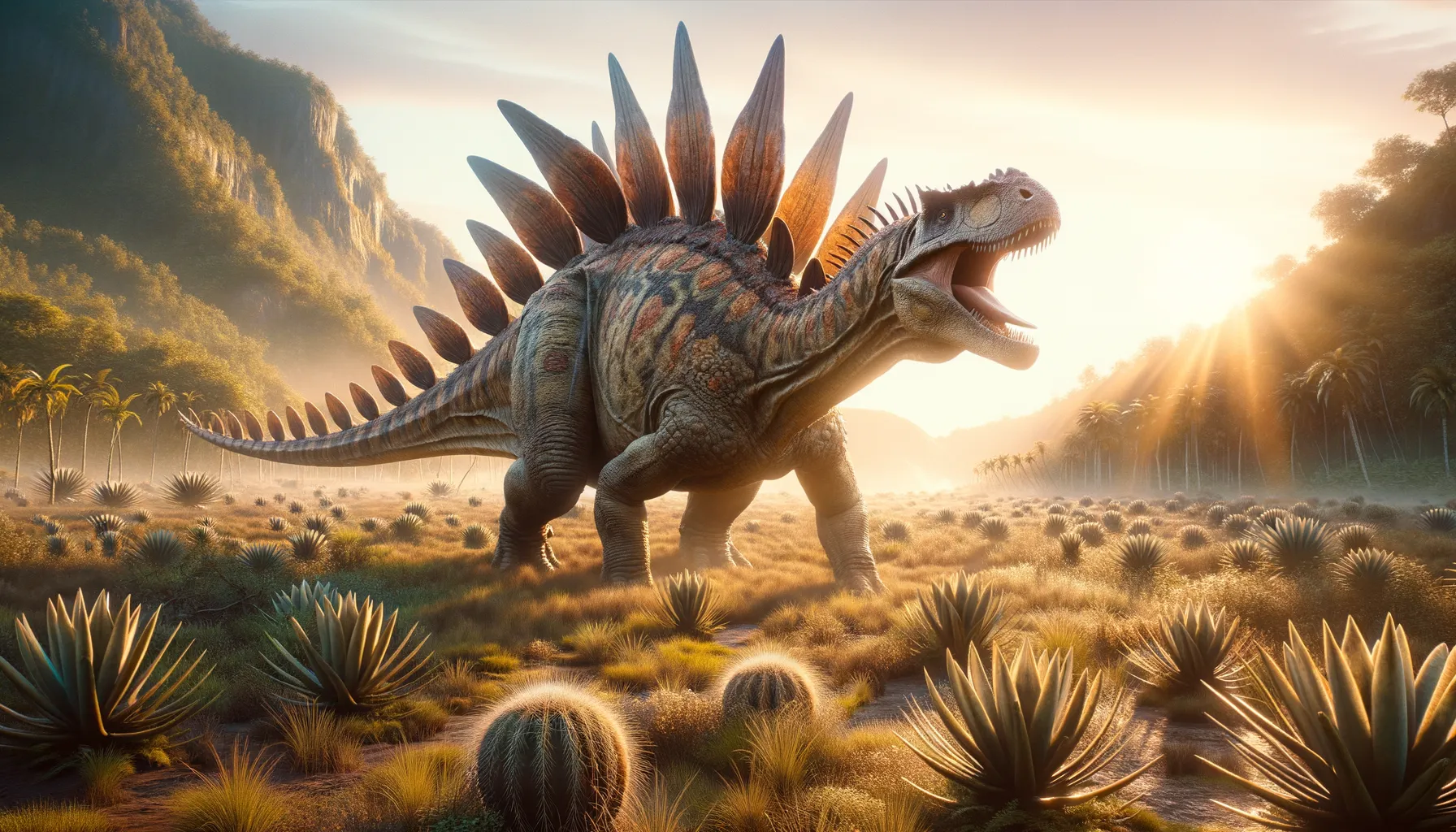
Paranthodon
Silent browser of the ancient landscapes.
Period
Cretaceous
Length
Around 5 to 6 meters long.
Height
Approximately 2 meters tall.
Weight
Estimated around 1 tonne.
Paranthodon was a plant-eating dinosaur, well-adapted to life as a browser in the Cretaceous period. It was a stegosaurid, a group known for their distinctive back plates and tail spikes. Although smaller than some of its relatives, Paranthodon possessed robust limbs and a large, strong beak-like mouth for cropping vegetation. Its remains, primarily found in South Africa, have provided valuable insights into the diversity and adaptation of dinosaurs in that region about 100 million years ago.
Diet
Paranthodon was an herbivore that fed primarily on low-lying vegetation such as ferns and shrubs. Its strong beak-like mouth was ideal for cropping tough plant material and stripping leaves, which provided the necessary nutrients to support its large body.
Hunting
As a herbivorous dinosaur, Paranthodon did not engage in hunting behavior. Instead, it foraged for plants at ground level and likely used its sense of smell to locate food sources. Its lifestyle revolved around searching for adequate forage rather than hunting prey.
Environmental challenges
Paranthodon faced environmental challenges such as seasonal changes in vegetation, which could affect food availability. It also had to be cautious of predatory dinosaurs that coexisted in its environment. Periods of drought might have tested its resilience, forcing it to venture further in search of food and water.
Speed
Likely slow, adapted for a browsing lifestyle.
Lifespan
Estimated to be several decades.
First discovery
Discovered in 1845 in South Africa by Broom.
Fun Facts
- Paranthodon lived around 125 million years ago during the Early Cretaceous period.
- It was a herbivore, which means it primarily ate plants.
- Paranthodon was discovered in South Africa and is one of the first dinosaurs found in Africa.
- This dinosaur belonged to the Stegosauria group, known for having armored plates on their backs.
- Unlike its more famous relatives, Paranthodon did not have the large plates, but it did have a small beak-like mouth.
- The name Paranthodon comes from the Paranthodon region in South Africa, where its fossils were first found.
- Paranthodon was relatively small for a dinosaur, measuring about 5 meters (16 feet) long.
Growth and Development
Paranthodon likely experienced steady growth throughout its juvenile years, gradually reaching its mature size. Like many dinosaurs, it might have had rapid growth spurts after hatching, becoming more independent as it developed. Its growth patterns depended heavily on the availability of food resources and environmental conditions.
Habitat
Paranthodon lived in what is now known as South Africa, a region that would have been rich with lush vegetation during the Cretaceous period. It thrived in environments where dense plant life was abundant, such as forested areas and near water sources. These habitats provided sufficient food, shelter, and protection from predators.
Interaction with other species
Paranthodon would have shared its habitat with various dinosaurs, including predators, herbivores, and smaller reptiles. It likely coexisted in a complex ecosystem where different species played specific roles. Defensive adaptations such as its tail spikes might have been used to deter predators and assert dominance in social interactions.
Natural lifespan
Paranthodon's natural lifespan was likely several decades, similar to modern large herbivores.
Reproduction
Paranthodon, like most dinosaurs, would have reproduced by laying eggs. It may have constructed nests and practiced some form of parental care, ensuring the eggs were incubated properly. However, details on its reproductive behavior remain speculative and rely on comparisons with similar dinosaurs.
Social behaviour
There is limited evidence regarding Paranthodon's social behavior, but it might have lived in small groups or herds to enhance its survival chances. Group living could have provided protection from predators and improved foraging efficiency. It might have used vocalizations or body language to communicate with others.
Fossil locations
Fossils of Paranthodon have been primarily found in South Africa, offering insights into its existence during the Early Cretaceous. These fossils help paleontologists understand the distribution and adaptation of herbivorous dinosaurs in southern continents. Continued excavations might reveal more about its behavior, ecology, and evolution.
